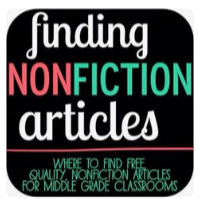How to Embrace and Align Project-Based Learning in the Classroom
By Dr. Jenny Pieratt, August 27th 2019
Educators often struggle to maintain pre-existing curricular initiatives while simultaneously staying up-to-date with innovative educational practices. Although incorporating project-based learning in the classroom requires some preparation, it should not feel like an “addition” to the normal workload of a curriculum planner or teacher. During my career as an educator, I have observed schools world-wide who embrace efficient and effective methods that make project-based learning in the classroom an easy task, regardless of the aligned standards, benchmarks or competencies. While many schools have already adopted Next Generation Science Standards (NGSS), Common Core State Standards (CCSS) or other aligned curriculums, they are finding creative and simple ways to incorporate project-basedlearning in the classroom. Here are some powerful approaches educators can use to elevate their project-based practice, using Benchmarks Advance, Mystery Science and Newsela.
Benchmarks Advanced
I’ve worked with quite a few schools that are adopting Benchmark Advanced, particularly Benchmark English-Language Arts (ELA), and fusing it with their project-work. This resource drives forward student learning by including essential questions for different units, allowing students to independently investigate given topics. These essential questions can easily be flipped into driving questions for project-based learning in the classroom. An excellent example is how the technology unit asks students to compare Alexander Graham Bell and Thomas Edison. In considering the vast possibilities, I would kick this up a notch for a project by asking students to compare these inventors with more contemporary, international inventors. This adds depth, allowing students to challenge their pre-existing knowledge and cultivate cultural awareness. This could lead into video-making, with a “Back to the Future” theme, where students then extend their knowledge to predict what advancements might looks like 20-50+ years from now. The idea is for students to take an active interest in their own learning and to use the past to predict what things might look like down the road. Another great way which the curriculum allows for creating academic curiosity is by enabling educators to choose the type of questions that interests them, allowing students to conduct more extensive research. A good topic question for a lower grade might be, “What is the value of innovation?” while an academically mature equivalent could be “How can innovators of the past to understand academic progress in science and society up until today?” Each ELA unit contains self-reflections that can be expanded throughout the unit and allows for much potential in hyping-up the content for project-based learning in the classroom, pushing students toward more profound learning.
Mystery Science
Mystery Science offers hands-on activity suggestions and fun labs, inspiring students to love learning. This resource helps teachers prep “in minutes, not hours” and offers quick and easy lessons with application for project-based learning in the classroom. Typically used in initial benchmarks for project exploration, Mystery Science is a solid go-to idea for teachers who want to step up their PBL game. Teachers will often use the end of chapter/summative assessment from Mystery Science as a benchmark deliverable and as formative assessment for their project. A project example I’ve used to inspire community action starts with the driving question, “How does erosion impact our lagoon?” In this project, students learn about positive and negative changes to our environment in order to help inform the community and increase local impact. As assessments, students create informational placards and a traveling museum exhibit of local lagoon/coastal landforms. The best part of using Mystery Science to elevate project-based learning in the classroom is the unending curiosity they mutually inspire in our students.
Newsela
Another great program allowing for easy integration of project-based learning in the classroom is Newsela, a dynamic program I used when I was in the classroom and which is commonly visited by many teachers. Newsela can be leveraged in many ways, from helping students acquire background knowledge, to supporting teachers in lesson planning and pulling together a variety of materials for every type of reading unit in an organized and accessible way. Newsela offers site licenses or district licenses, granting schools’ access to resources that can support project planning and save a ton of time. Project-based learning in the classroom demands real-world application that cannot necessarily be found in an outdated textbook. Otherwise, teachers dedicate a vast majority of time searching for resources, such as relevant news articles or videos that they can show students, and typically have to re-write all the material to align with younger grades or students with special needs. Newsela also provides a solution for organizing all relevant material so that students have it when they need to gain that background knowledge for a particular benchmark, keeping all those resources in a nice, neat and tidy space that is easily accessible.
While teachers must be adaptable to make project-based learning in the classroom a reality, these digital resources allow us to stay relevant in our schools and offer students real world learning beyond any textbook. Using technology to enhance learning has many positive effects, making projects more accessible to students and allowing them to access to endless amounts of information with a few clicks. Whether you prefer online courses or traditional books, we make it easy for you to find ways to incorporate PBL into your classroom. When deciding when PBL makes sense with your curriculum, remember you are most likely one-click away from an amazing resource that will help to give you an “easy lift” while embracing project-based learning in your classroom.


